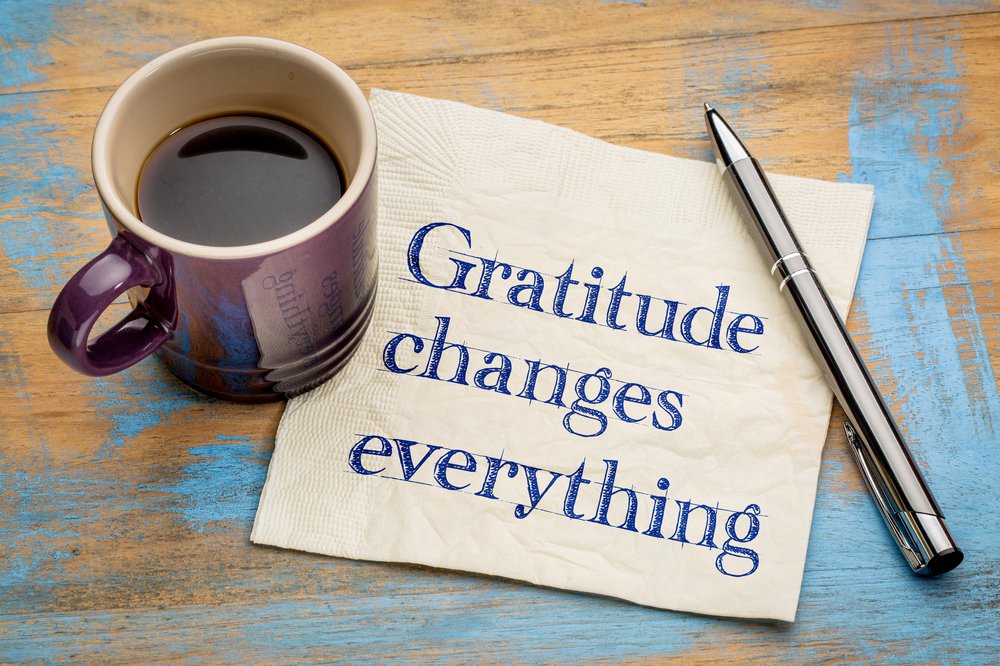

Every year around the last few weeks of December, I like to take my journal, curl up somewhere warm, and reflect on what I’ve learned over the past twelve months. My birthday conveniently coincides with the end of the calendar year (it’s December 29th), which helps fuel my desire to conduct this annual retrospective, of sorts.
I’ve shared some of my lists before. In fact, 40 Things I Learned About Being Happier that I wrote on my 40th birthday, turned into a letter to my daughter that made it into my book, HAPPIER NOW, which came out earlier this year.
Although this year’s list is less ambitious in number, I felt moved to give more context for each learning. I’m sharing my list with only one intention: that it might inspire you to pause and make a similar list of your own. Rather than setting New Year’s resolutions, this tiny ritual helps me grow a bit more every year and perhaps it will become a ritual you value, too.
So, without further ado, here are 12 Things I Learned This Year About Self-Doubt, Joy, and the Amazing Power of Human Connections.
1). The best way to deal with self-doubt is to focus on your Bigger Why: How does what you’re doing help someone else or contribute to something you care about?
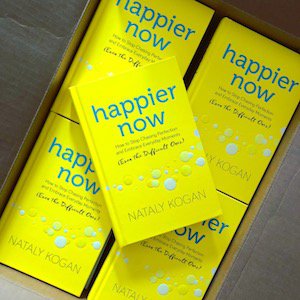 If you’re creating something new, doing something that shares a bit of you with the world, or are starting on a new journey, you will feel self-doubt. I re-learned this lesson this year when my book came out in May. The voice of self-doubt was screaming in my head: “What if no one cares about your book? What if no one buys it? What if your publisher is disappointed in you? What if you completely fail as an author?"
If you’re creating something new, doing something that shares a bit of you with the world, or are starting on a new journey, you will feel self-doubt. I re-learned this lesson this year when my book came out in May. The voice of self-doubt was screaming in my head: “What if no one cares about your book? What if no one buys it? What if your publisher is disappointed in you? What if you completely fail as an author?"
But here’s the more important lesson I learned: The more I focused on why I wrote my book in the first place, the quieter the voice of self-doubt became. I wrote it to share my journey and the life-changing lessons I learned because I knew that my struggles weren’t unique and the book could help many other people. That was my Bigger Why for writing it and every time I reconnected to it, the voice of self-doubt became weaker.
2.) If you’re passionate about doing something, tell people in your life and ask for help. Don’t assume that they already know.
 In June, I gave a keynote at the Girls in Tech conference in San Francisco. It felt invigorating to speak to the hundreds of young and courageous women in the audience and help them to move through fear so they could realize their greatest potential. I’ve always been passionate about supporting other women and that particular talk reignited my commitment to find new ways to do it.
In June, I gave a keynote at the Girls in Tech conference in San Francisco. It felt invigorating to speak to the hundreds of young and courageous women in the audience and help them to move through fear so they could realize their greatest potential. I’ve always been passionate about supporting other women and that particular talk reignited my commitment to find new ways to do it.
So, a few weeks after I got home, I decided to write an email to everyone in my network, including the 200K plus subscribers of our Happier community email list, and share my renewed commitment. My message and ask were simple: “I want to help more women thrive in work and life by sharing the science-based Happier skills that have helped me and tens of thousands of others. If you know of ways I can connect with women leaders, professionals, and entrepreneurs, please reach out.”
The results have been amazing. Many people emailed back with ideas for events or companies to connect to, and in the months since I sent my email, I’ve spoken at a dozen women’s leadership events -- and have more women-focused keynotes and workshops scheduled for 2019.
It wasn’t magic. It wasn’t even about having an intention -- although being clear on my intention helped. The key was taking the action to share my commitment and desire with everyone I knew and asking them for help.
3. Don’t dismiss positive chance encounters with other people. Put in the effort to see if those seeds of connection are meant to grow into something more meaningful.
In April, I was to give a short talk about the science of happiness at a Boston event for entrepreneurs. All the speakers did short video interviews right before the event and one of them, David Edwards, recorded his before mine. I couldn’t hear a lot of what he said, but I could see how passionate he was and wanted to know more. So when we found ourselves waiting for the event to begin a bit later, I asked him about his work.
David shared a bit about his current company that is using scent to improve well-being and about his passion for bringing science and art together. We continued our conversation after our respective talks and by the end of the evening, David graciously offered to host my book party at his magical restaurant and experience space. It only took a few more meetings over coffee to recognize that I didn’t just connect with a fellow speaker, but made a lifelong friend.
But I would have missed out on this friendship if I didn’t pause to be present in the moment, to pay attention, and to have a genuine conversation with David, rather than just leaving it to small talk.
4. When you have fun doing what you’re doing, you're better at it.
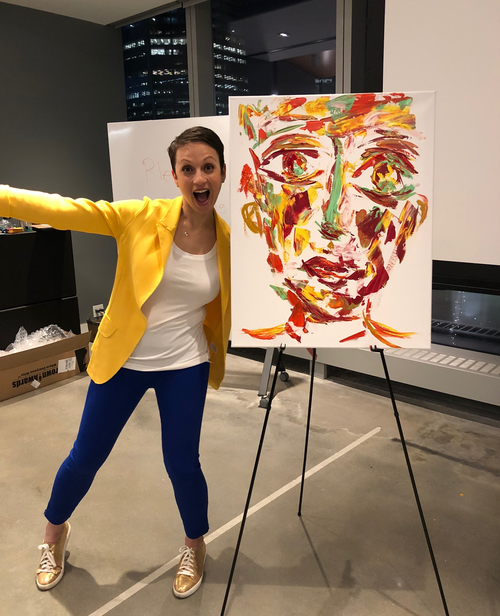 I wear bright yellow outfits on stage when I speak for no other reason that I love yellow and bright colors -- and when you have a book out, I think it’s totally logical to match the cover of it, right? I put a ton of effort into making my slides look awesome and vibrant, using my art as backgrounds -- and sometimes I even paint live on stage!
I wear bright yellow outfits on stage when I speak for no other reason that I love yellow and bright colors -- and when you have a book out, I think it’s totally logical to match the cover of it, right? I put a ton of effort into making my slides look awesome and vibrant, using my art as backgrounds -- and sometimes I even paint live on stage!
I tell stories and jokes during my talks because that’s how I feel most natural sharing what I’ve learned -- and it’s also more fun for me.
A few weeks ago, as I was chatting with some of the alumni and students of Northeastern University’s entrepreneurship program after my keynote there, one of the participants came up and said: “You had so much fun out there! And I had so much fun with you! I loved it -- and you had my attention every single second because of it.”
I work super hard on every talk, crafting the flow, the ideas, the research. But I also leave room and energy to have fun, to enjoy sharing the material I’ve prepared. And I’m confident that it makes me better at what I do and helps people listening to me get more out of the experience.
5. Fear is powerful and can color everything bleak, causing you to make bad decisions. Be aware of when you feel it and learn to recognize whether you’re making decisions from fear or from love.
When we feel fear, everything gets smaller, more constricted (even our peripheral vision). Our brain and body prepare to defend ourselves and all energy is conserved to do that, including creative and mental energy. When we face physical fears that may require us to run from say, a pack of wolves, this is useful. But these days, most of our fears are psychological -- and of our own creation.
I’ve faced a lot of fears this year: fear of my book not doing well, fear of not being able to grow the Happier business and our Happier @ Work program as successfully as I want, fear of not being good enough, original enough, strong enough… you name it. It comes with the territory of being an entrepreneur and an author. Each time I recognized the fear, I could see just how easily it could cloud the decisions I was making, or had already made. They were smaller and less bold, limiting opportunities in the future rather than creating them.
So the practice is this: Ask yourself if you’re making a decision from a place of fear or a place of love, dedication, sense of meaning, or commitment to something you care about. The answer is amazingly crisp most times and can be an invaluable guide.
6. Celebrate all the milestones, from tiny ones to huge ones. Do it with your full heart and share in the celebration with anyone who helped you get there. This is your fuel to keep going.
This one doesn’t really need an explanation, does it? Every tiny step of progress on your way to your goals is worth your full gratitude -- for getting there, for yourself, for people who helped you, for the opportunity to work towards it. Embrace your joy and honor your milestones with a celebration, even if for a moment!
7. “If I create from the heart, nearly everything works; if from the head, almost nothing.”
This quote is from one of my favorite artists, Marc Chagall. It’s come to mind many times this year, when I came face to face with its wisdom and truth. Whatever I was working on -- an article, a part of a talk or workshop, a piece of art, even a social media post -- if I forced it, overworked it, over-analyzed it, it landed flat. In fact, I could tell it would land flat the moment I created it because it didn’t feel quite right.
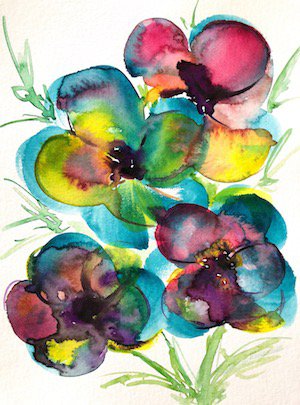 But at times when I was able to connect to the true essence of what I wanted to express and get out of my own way long enough to let it flow out, it worked beautifully. Not only did it resonate with the people who experienced whatever it was, I felt fueled by creating it.
But at times when I was able to connect to the true essence of what I wanted to express and get out of my own way long enough to let it flow out, it worked beautifully. Not only did it resonate with the people who experienced whatever it was, I felt fueled by creating it.
I don’t do this all the time, but when I’m working on something (like this list of learnings!) I pause and try to sense whether it’s coming from that place of flow or if I’m forcing it. If the latter, I switch, do something else, fuel myself in some way.
I come back when I feel energized and excited to dive in, and if I don’t, then I look for ways to shift the original idea into something else or skip it all together. (Can I just say how difficult and useful it is to not do some things because they don’t feel right?)
8. Your work is reaching and helping more people than you know. Keep doing it if you believe in it.
A few months ago, when I was walking out of my yoga studio, I ran into a colleague from many jobs ago. After chatting for a bit she said, “Thank you for the work you do. I need it. I find so much inspiration in your book and your emails every week. Please keep going.”
I was stunned. This wasn’t someone I was friends with when we worked together and I didn’t think we were connected on social media. But somehow she found my work and it was meaningful to her.
I came home that day and wrote down in my journal: “Your work helps more people than you realize, keep going.” And evidence of this has been coming to me so much since then.
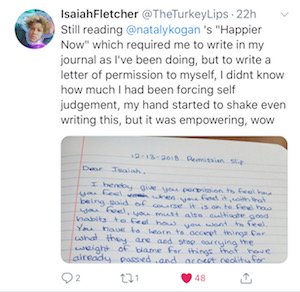 Recently, a young man Tweeted how much my book was helping him and he even included screenshots of his journal with some of the Happier practices he had done. I looked up his profile only to learn that he was a passionate gamer -- most of his other Tweets were about video games. I never imagined that my work would reach someone from such a different background than me and it meant so much to me.
Recently, a young man Tweeted how much my book was helping him and he even included screenshots of his journal with some of the Happier practices he had done. I looked up his profile only to learn that he was a passionate gamer -- most of his other Tweets were about video games. I never imagined that my work would reach someone from such a different background than me and it meant so much to me.
Then there’s my aunt who lives in Israel. She is such a tough cookie and the last person I ever expected to read my book. But she recently told my dad that she has a weekly appointment with herself to read parts of it and do the practices -- and that slowly, she feels it’s helping her. (My dad was teary he was telling me this and I was teary listening to him in disbelief.)
I’m so grateful that I get to hear these stories and I savor every single one. But more than that, they are reminders that my work is helping people in meaningful ways.
Earlier this year I created a folder in my email called LOVE and when I get an email about how something I’ve said or written positively impacted another person, I add it to the folder. On days when I feel discouraged or just need a boost, my LOVE folder is an amazing resource -- I highly recommend creating one!
9. Many things won’t go as you planned or wanted. How you frame why it happened determines whether you’ll keep going or get stuck in a total, miserable funk.
Last spring, a few weeks before my book was to come out, one of the top newspapers -- and I mean, one of the very top, the one you really want to write about you -- was considering doing a story about me and my work. This would be huge boost for the book, our Happier @ Work program, and really, for all things Happier. We worked our butts off getting all the materials to them and held our breath.
After all things were seemingly going our way, the story didn’t happen. It’s hart do know why -- the world of media changes so often and different priorities pop up. But I was so bummed. I got into a total funk, decided that my work wasn’t interesting to anyone, and sulked around for days. OK, it was actually weeks, if I am being honest.
A few months later, I was talking with my colleague, Debbie, as we were planning the official launch announcement of our Happier @ Work program. We’d successfully piloted it with several companies to awesome feedback and were now getting ready to tell the world about it. And suddenly it struck me: We weren’t ready for the big media piece earlier this year. It wasn’t the right time. We needed more time to learn and process and then learn some more, so we could truly do our best work with our partner companies.
The way you frame why something happens determines what you do next and whether you do it with positive, productive energy or sluggishly, resenting why things didn’t go your way. The former is so much more useful!
10. When you’re tired, rest. If you can’t rest for a long time, rest for a little bit. If you can’t rest right away, rest soon.
Self-care and, more specifically, taking breaks to rest and nourish yourself, is one of the 5 Core Happier Skills that I teach to people and companies. And yet, I’ve found myself struggling with it this year. I was so grateful for the opportunities to speak to so many audiences after my book came out, to lead workshops, to create new courses and programs, to share my lessons learned with so many different people. I was fueled by my desire to share and help… and often, I pushed through the tiredness when I should have paused to catch my breath.
But every time I did take a break, my work was better afterwards. Every time I paused to nourish myself in some way -- a no-work, no-phone weekend, a little painting in the morning, an extra yoga class, just time to chill and not do anything -- I was more energized and got more done than if I’d kept pushing myself.
Here’s the question that really helps me prioritize a little self-care time even when I’m feeling like I have too much on my to-do list: Am I at my very best right now? Am I doing my very best work? The answer is usually quick and clear.
11. Most meaningful creations need time to marinate. Let them.
Patience is not one of my strengths. So when I have an idea for something, I move to execution very quickly. This bias towards immediate action has served me well throughout my career, but this year in particular I’ve learned the value of letting things stew, marinate, and cook. (I’m going to stop with the cooking terms, promise.)
I give tons of credit for this learning to my colleague, Debbie, who is very comfortable letting things wait until the last minute before finalizing them. By collaborating with her, I’ve learned that giving things time often creates new connections and ideas that make them better, allows us to notice nuances we might not have considered, and sometimes, highlights reasons for why this particular creation shouldn’t yet see the light of day.
We don’t always have the luxury to let our creations simmer (yes, breaking a promise with another cooking term!), but when we do, it’s an opportunity worth taking.
12. Do more of what brings you joy. Your joy fuels you to be your best self so you can do your best work and be the most awesome human for people you care about.
What a weird lesson to be learned by someone who is the CEO of a company called Happier, right? Well, sometimes we need to be reminded to practice what we teach and this year, I was reminded how essential it is to do what brings me joy.
The awesome thing is that the moments that bring me joy are really simple, like:
Switching from listening to podcasts to fiction books during my daily walks.
Taking a few mornings each week to move slowly, not do calls (if possible), and allow time for thinking, journaling, or just being.
Wearing bright colors, especially when the darkness of Boston’s winter makes sunshine and daylight scarce.
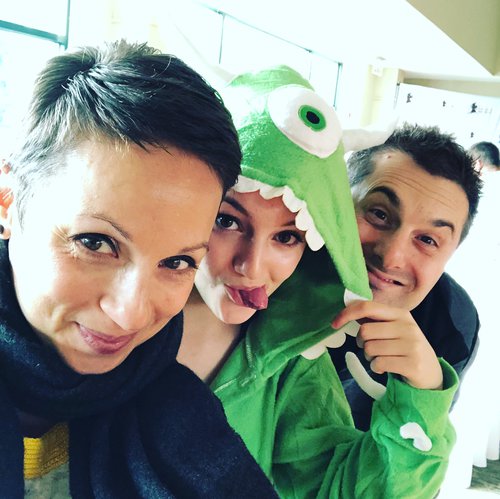 Hanging out with my two favorite companions, my husband and our daughter.
Hanging out with my two favorite companions, my husband and our daughter.
Eating sardines out of a can. (Yep, judge away, it’s the only way.)
A long dinner or a walk with a friend.
Writing in colorful pens in my journal.
Going to the movies or watching movies at home (which is part of our modernized Shabbat ritual on Friday nights: sushi and a movie.)
Painting without any agenda and simply to enjoy it, even if I only have a few minutes for a small watercolor.
Going to my parents’ house for dinner and feeling grateful every time that we live 2 miles away.
Making a hot cup of coffee after a chilly morning walk and then sitting down to savor it without checking email.
A dinner picnic on the floor of our living room with my daughter, when we’re both too tired to have a proper dinner and pick random things from the fridge to eat while watching an episode of House.
Expressing my gratitude to people I love and who support me as often as I possibly can, sometimes just with words, sometimes with art, small gifts, or handwritten notes. I’ve reconnected to the deep beauty of this practice this year and it brings me so much joy.
It’s not selfish to do what brings you joy. It’s the best investment in your ability to share your awesomeness with the world.
Thank you for reading and being part of my journey this year. I hope you’ll consider giving yourself the gift of reflecting on what you learned in 2018.
With love and gratitude,
Nataly
Don't miss your happier boost!
Subscribe to our weekly email to get practical tips and inspiration to help you feel more joyful and resilient.
